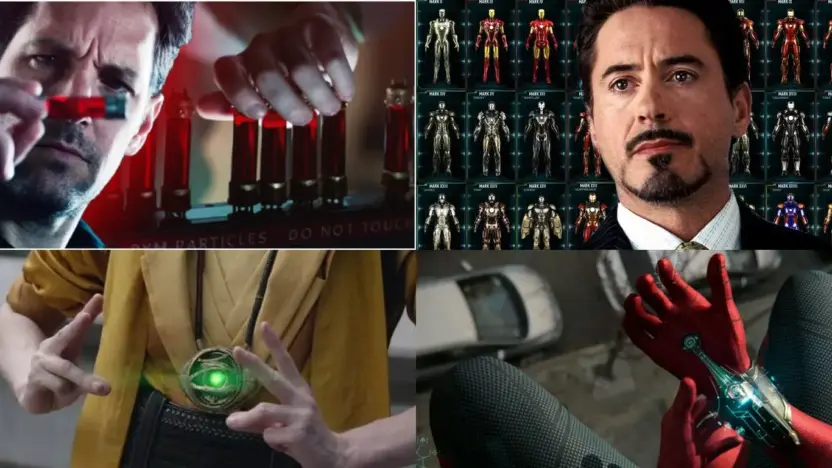Technology Shown in Marvel Comics That Makes No Sense: This article delves into the heart of the Marvel Universe, examining the most staggering technologies that make absolutely no sense in our reality. From Iron Man’s seemingly limitless power supply, to Ant-Man’s incredible Pym Particles, we’ll unravel the enigma behind these wildly imaginative, yet logically baffling tech marvels. Stay with us as we embark on a journey that will question the boundaries between fiction and plausible science, and leave you wondering about the magical world of Marvel technology.
Technology Shown in Marvel Comics That Makes No Sense
Ant-Man’s Pym Particles
In Marvel comics, Ant-Man’s use of Pym Particles to manipulate his size, from as tiny as an ant to as tall as a skyscraper, raises scientific eyebrows. His size transformation also remarkably preserves his normal strength, irrespective of his size. From a physics perspective, this size manipulation, along with retained strength, challenges the square-cube law, which describes the relationship between size and volume.
Additionally, the lack of biological consequences of such transformations counters our understanding of physiology and cell function. Thus, while Pym Particles facilitate fascinating plotlines and heroic feats in the Marvel universe, their operation contradicts established principles of physics and biology, rendering them implausible within our current scientific framework.
Iron Man’s Armor
Marvel comics often present technologies that challenge the boundaries of real-world science. Take Tony Stark’s Iron Man suit as an example: constructed from an almost indestructible alloy, it’s equipped with multifunctional abilities, such as flight, repulsor beams, and complex task execution. Remarkably, it can be compressed to fit into a small case or within Stark’s body. Furthermore, this suit boasts self-repair and reconfiguration features.
The entirety of its functioning, from energy storage to material composition and engineering design, surpasses what we can presently achieve in these fields. Although such technology adds to the captivating narratives in the Marvel Universe, in reality, the construction and operation of such a suit contradicts the known laws of science.
Captain America’s Shield
Captain America’s shield, crafted from a Vibranium-steel alloy, stands as an iconic example of the scientifically implausible technology depicted in Marvel comics. This shield, virtually indestructible, possesses the power to absorb all kinetic energy, effectively contravening the fundamental principle of energy conservation. Beyond the property of indestructibility, the shield demonstrates remarkable resilience, able to ricochet off objects while preserving momentum, an impossibility in known material science and physics.
In reality, no known material can exhibit these diverse and extreme properties. Yet, in the Marvel universe, the shield serves as a compelling symbol of superhero resilience and strength, adding to the allure and captivating nature of these popular comic narratives.
Spider-Man’s Web Shooters
Spider-Man’s web shooters, iconic features in Marvel’s universe, exemplify technology that defies our understanding of physics and engineering. These devices generate a robust, adhesive substance that can support substantial weight, including Spider-Man’s own and that of others, whilst maintaining elasticity and tensile strength.
Moreover, the webbing dissolves within an hour, leaving no trace behind. Such an advanced material, compact storage system, and rapid production mechanism contradict what we know about material science and chemical engineering. The amount of energy and raw materials required to produce the webbing and the technology to rapidly synthesize it in a compact form are beyond our current capabilities. While the web shooters add to Spider-Man’s appeal and narrative, their functionality remains scientifically inscrutable.
Doctor Strange’s Eye of Agamotto/Time Stone

Marvel’s Eye of Agamotto, containing the Time Stone, grants its wielder the profound ability to manipulate time — accelerating, decelerating, or even reversing its flow. This level of control over temporal dimensions, while thrilling within the comics’ narratives, contradicts current scientific understanding. Time dilation, as explained by Einstein’s theory of relativity, allows time to change relative to an observer, but it’s based on speed and gravitational effects, not individual control.
The Time Stone’s function seemingly ignores these constraints, permitting unbounded and nuanced control of time, a concept beyond the realms of current physics. Furthermore, the stone’s capacity to reverse time challenges the notion of the “arrow of time,” a concept implying a one-way direction for time. Hence, as spectacular as it is in the comics, the Time Stone’s capabilities remain scientifically perplexing.
The Tesseract/Space Stone

The Tesseract, a cubic container for the Space Stone, one of the Infinity Stones in Marvel Comics, showcases fantastical technology that challenges our understanding of spacetime physics. It offers the power to instantaneously teleport to any location in the universe, establishing portals through space with apparent ease. Such a process defies the current scientific principles, particularly those pertaining to the speed of light, which is universally accepted as the “cosmic speed limit.”
Teleportation would require traversing distances faster than light, something currently deemed impossible. Additionally, the energy requirements for creating such wormholes or portals, according to general relativity, would be immense. As captivating as it is in the narrative, the Tesseract’s function is a sci-fi concept that stands at odds with our present-day physics.
Also Read: 10 Lowest Rated Marvel Movies on IMDb



